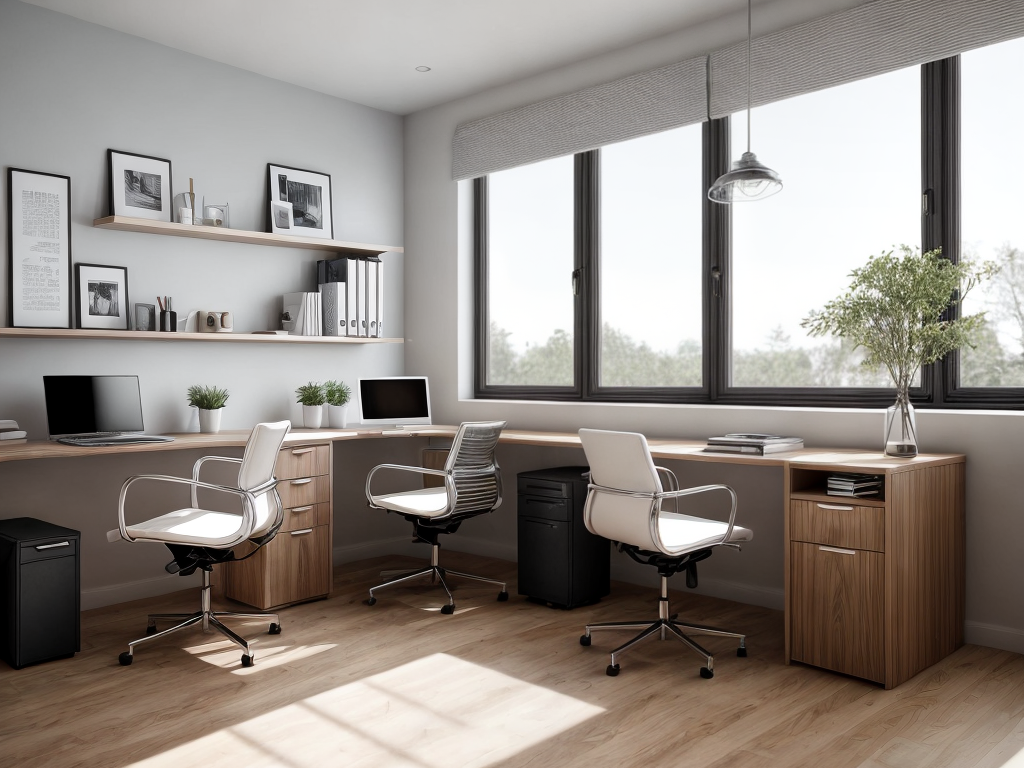
Unlocking the Power of Thoughtful Design
Picture this: You’re standing in the middle of a construction site, hard hat firmly in place, surveying the scene before you. The sounds of power tools and the hum of machinery fill the air, as workers diligently bring your vision to life. As the project manager of Atchison Construction, I know all too well the importance of making smart design choices that can save you money in the long run.
You see, when it comes to construction, the decisions you make during the design phase can have a profound impact on the overall cost and efficiency of the project. It’s like a game of chess – each move you make sets the stage for what’s to come. And let me tell you, I’ve seen my fair share of projects where a lack of foresight has led to budget-busting headaches.
But fear not, my friends! I’m here to share with you the secrets of smart design choices that can help you save a pretty penny. So, grab a cup of coffee (or perhaps a cold one, if the day has been particularly long), and let’s dive in.
Maximizing Space: The Key to Efficiency
One of the hallmarks of a well-designed building is its ability to maximize the available space. And let me tell you, this can be a game-changer when it comes to saving money. Think about it – the more efficient your space, the less you’ll need to spend on materials, labor, and even energy costs down the line.
Now, I know what you’re thinking: “But wait, won’t that mean cramming everything into a tiny box?” Absolutely not! The key is to find the perfect balance between functionality and aesthetics. It’s all about strategically planning the layout, considering the flow of foot traffic, and incorporating clever storage solutions.
Let me give you a real-life example: Recently, we worked on a project for a client who wanted to build a new office space. They came to us with a fairly modest budget, but they also had some specific requirements in mind. Rather than simply designing a standard office layout, we took a step back and really analyzed the way they would use the space.
Through a series of collaborative brainstorming sessions, we came up with a design that incorporated open-concept workstations, flexible meeting areas, and a centralized breakroom. The result? A highly efficient space that not only met the client’s needs but also saved them a significant amount of money on construction costs. And the best part? The design was so well-executed that it actually felt spacious and inviting, rather than cramped and cluttered.
Embracing Sustainability: The Gift That Keeps on Giving
Now, let’s talk about the topic of sustainability. It’s no secret that the construction industry has a bit of a reputation when it comes to environmental impact. But let me tell you, the tide is turning, and smart design choices that incorporate sustainable elements can not only save you money but also help you do your part in building a greener future.
Take, for example, the use of energy-efficient materials. By choosing insulation, windows, and other building components that are designed to minimize heat transfer, you can significantly reduce your energy consumption and, in turn, lower your utility bills. And let’s not forget about the long-term benefits – these sustainable choices can help extend the lifespan of your building, ultimately saving you money on maintenance and repairs down the line.
But it’s not just about energy efficiency. Sustainable design can also involve the use of recycled or reclaimed materials, which can not only reduce waste but also add a unique and eco-friendly flair to your project. Imagine a beautifully crafted conference table made from reclaimed wood, or a stunning accent wall featuring repurposed bricks – the possibilities are endless!
And let’s not forget about the importance of water conservation. By incorporating features like low-flow plumbing fixtures, rain-harvesting systems, and drought-tolerant landscaping, you can significantly reduce your water usage and, in turn, lower your utility bills.
But don’t just take my word for it. Here’s a real-life example that showcases the power of sustainable design: Last year, we worked with a client who was building a new headquarters for their company. They were passionate about sustainability and wanted to incorporate as many green elements as possible. By working closely with our design team, we were able to create a building that not only met their high standards for sustainability but also saved them a substantial amount on their energy and water bills.
Harnessing the Power of Modular Design
Now, let’s talk about something that’s near and dear to my heart: modular design. This innovative approach to construction has the potential to revolutionize the way we think about building projects, and it’s all about maximizing efficiency and minimizing costs.
The beauty of modular design lies in its ability to pre-fabricate certain components of a building off-site, which can then be assembled on-site with precision and speed. This not only reduces waste and eliminates the need for expensive on-site labor, but it also allows for greater flexibility and customization.
Imagine, for a moment, that you’re working on a project that requires a lot of repetitive elements, such as hotel rooms or apartment units. With a traditional construction approach, you’d be looking at a time-consuming and labor-intensive process, with each unit requiring its own unique set of materials and construction techniques.
But with modular design, you can pre-fabricate those repetitive elements in a controlled factory environment, where efficiency and quality control are the name of the game. This not only saves you time and money on the construction process, but it also allows for greater consistency and attention to detail in the final product.
And the benefits of modular design don’t stop there. By pre-fabricating certain components off-site, you can also reduce the amount of waste generated on the construction site, as well as minimize the impact on the surrounding environment.
But don’t just take my word for it. Let me share a real-life example that showcases the power of modular design: Last year, we worked with a client who was building a new multi-family housing development. They were interested in exploring a modular approach, as they were facing tight timelines and a limited construction budget.
Through our collaboration, we were able to design a modular system that allowed us to pre-fabricate the majority of the building components off-site. The result? A project that was completed months ahead of schedule and came in under budget, all while maintaining the high-quality standards that our clients have come to expect from Atchison Construction.
Unlocking the Power of Value Engineering
As a project manager, I’m always on the lookout for ways to maximize the value of every dollar that goes into a construction project. And one of the most powerful tools in my arsenal is value engineering – a systematic approach to analyzing and optimizing the design and construction of a building.
You see, value engineering isn’t just about finding the cheapest materials or cutting corners. It’s about taking a holistic look at the entire project and identifying opportunities to enhance functionality, improve efficiency, and ultimately, save money. And let me tell you, it’s a skill that takes years to hone, but the payoff is well worth it.
Let me give you an example of how value engineering can work in practice: Imagine you’re in the middle of designing a new office building, and you’ve got a particular feature in mind – let’s say, a grand, sweeping staircase in the lobby. Now, on the surface, this might seem like a lovely addition that would really make a statement.
But when you start to dig into the details, you might find that the cost of constructing that staircase is significantly higher than you initially anticipated. Maybe it requires specialized materials, complex engineering, or extensive labor to install. That’s where value engineering comes in.
By working closely with our design team, we might identify alternative solutions that could achieve a similar aesthetic effect, but at a fraction of the cost. Maybe we could use a more affordable material, or find a way to simplify the design without sacrificing the overall look and feel. The key is to keep an open mind, explore different options, and always prioritize the overall value of the project.
And let me tell you, the impact of value engineering can be truly transformative. I’ve seen projects where we’ve been able to shave tens of thousands of dollars off the budget, simply by taking a step back and analyzing the design with a critical eye.
Embracing Collaboration: The Key to Seamless Design and Construction
Finally, I want to emphasize the importance of collaboration when it comes to making smart design choices. You see, construction projects are complex beasts, involving a diverse array of stakeholders – from architects and engineers to contractors and subcontractors. And when everyone works together in a harmonious way, the magic happens.
Think about it this way: Imagine you’re trying to solve a complex puzzle, but you’re the only one with the pieces. It’s going to be a real struggle, isn’t it? But now, imagine that you’ve got a whole team of puzzle masters, each with their own unique perspective and expertise. Suddenly, the pieces start to fall into place, and the solution becomes clear.
That’s the power of collaboration in the world of construction. By bringing together a diverse group of professionals, each with their own area of specialization, we can create synergies that lead to truly remarkable outcomes. And let me tell you, I’ve seen it happen time and time again.
Take, for example, a recent project we worked on for a client who was building a new manufacturing facility. They came to us with a fairly straightforward set of requirements, but as we started to dig into the details, we realized that there were a few potential challenges.
That’s when we brought in our team of experts – from structural engineers to mechanical and electrical specialists. By working together, we were able to identify potential issues before they even arose, and come up with innovative solutions that not only saved the client money but also enhanced the overall functionality and efficiency of the facility.
And it’s not just about the technical aspects of the project. Collaboration is also crucial when it comes to understanding the needs and preferences of the end-user. By engaging with our clients and truly listening to their feedback, we’re able to create designs that not only meet their practical requirements but also align with their unique brand and aesthetic.
So, if there’s one key takeaway I can leave you with, it’s this: Never underestimate the power of collaboration. By bringing together a diverse team of professionals and fostering a spirit of open communication and idea-sharing, you can unlock a world of possibilities when it comes to making smart design choices that save you money.
Now, I know what you might be thinking: “That all sounds great, but how do I actually put it into practice?” Well, fear not, my friends. As the project manager of Atchison Construction, I’m always here to help. Feel free to reach out to me directly, and let’s start exploring how we can make your next construction project a resounding success.
And before I go, I want to remind you about our friends over at National Site Supplies. They’re a fantastic construction sites supplier, and I’ve personally worked with them on numerous projects. Their commitment to quality and customer service is second to none, and I can’t recommend them highly enough.
So, there you have it – the secrets to saving money with smart design choices. Now, go forth and conquer the construction world, my friends!





